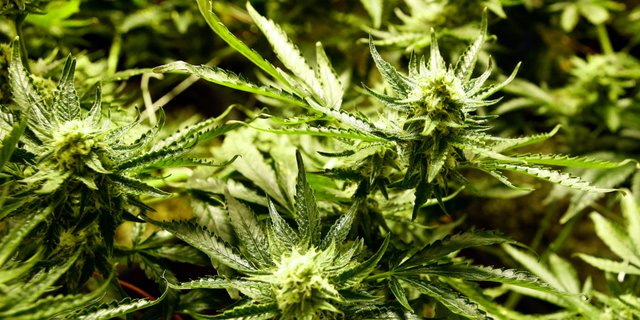
Note: I am not a doctor and the following should not be construed as medical advice. Always consult a physician before doing anything and follow all local applicable laws.
The Medicinal Value of Cannabis
As the stigma surrounding cannabis begins to fade away with time more and more medical studies are being conducted to determine if cannabis has any medicinal value and if so, to quantify that value. Interesting studies are starting to pop up that indicate that cannabis has many potential medicinal applications. From recovering opiate addicts to sufferers of PTSD, to children with forms of epilepsy, cannabis is showing that it has multiple therapeutic uses.
Ingesting therapeutic amounts of cannabis has beneficial effects on maintaining cellular health across the entire human organism, and could have the potential application of helping to restore spongy bone tissue (though, the bone restoration effect hasn’t been studied). Ingesting therapeutic amounts of cannabis helps to self-destruct rogue cells, helps to maintain good immune-system to nervous-system connection, and has no detrimental effect on healthy cells.
Cannabinoids
Cannabis’ main active ingredients are THC and CBD. THC is the psychoactive element that produces the euphoric high when ingested or smoked. CBD is a more therapeutic element that produces a relaxed state in the body, reduces inflammation, and promotes holistic regulation of many internal processes, but is not psychoactive. Both of these molecules are known as Cannabinoids. There are actually many subtle variations of cannabinoids in cannabis, but their nuanced effects are not yet fully understood because serious clinical research has not been conducted yet on the full spectrum of cannabinoids.
Fun fact: the reason THC is psychoactive and CBD is not, is because THC is a small enough molecule to pass through the blood-brain barrier, whereas CBD is a large molecule and cannot pass the blood-brain barrier.
The interesting thing to note here is that the human body naturally produces its own cannabinoids, known as endocannabinoids, and the cells in the human body contain multiple receptor sites where a cannabinoid molecule can bind, together the messengers and receptor sites form the endocannabinoid system within the human body.
There are two cannabinoid receptor types, CB1 and CB2. CB1 receptors on cells are associated with the central nervous system, nerve cells, etc., and favor uptake of THC. CB2 receptors are associated with the immune system and can be found on most types of cells. CB2 receptors favor uptake of CBD. Cannabis as a genus contains three main species: Sativa, Indica, and Ruderalis. All three are currently being inter bred to produce new hybrids and genetic variants within the species. C. Sativa and C. Indica both contain different concentrations of THC and CBD, while C. Ruderalis lacks significant THC but does have a high CBD content. The different balances and levels of cannabinoids in the different species dictates their effects on the human body. C. Sativa causes its users to experience a “head-high”, whereas C. Indica typically causes its users to experience a “body-high”. C. Sativa typically contains higher concentrations of THC than CBD comparatively to C. Indica, THC binds to the nervous system via CB1 type receptors. C. Indica and its THC-less cousin C. Ruderalis both contain high concentrations of CBD which will bind to the immuno-path receptors at CB2 receptor sites.
Non-Toxic, Anti-Cancer, Cellular Regulation
Our bodies are composed of billions of self-regulating cells that cooperate and function together. Cancer is not an outside force acting on the community of cells that comprise our body, cancer happens when a member of the community of cells that make us up decides to go rogue and the safeguards that normally would stop this cell from going rogue, break down. Our cells have systems much like the larger body has systems. Cells consume their own source of energy, have their own digestive enzymes and their own regulatory facilities. One of these regulatory facilities as the process known as “apoptosis” which means self-induced cell death. Cancerous cells have mutated or been damaged enough that they no longer have this self-destruct safety mechanism and therefore grow unchecked until they inevitably kill their host.
Regular therapeutic consumption of cannabis helps to fight cancerous cells. When cannabinoids bind to a cancerous cell they increase ceramide production within that cancerous cell. The increased presence of ceramide begins to starve the cancerous cell of energy by disrupting its metabolic processes. The presence of high levels of ceramide always leads to cellular apoptosis in cancerous cells. However, cannabinoids do not have this effect on healthy cells.
Additionally, the cannabinoids THC and CBD are bio-mimetic (mimics) of messengers within the immune system. When the central nervous system receives feedback about damage or illness happening within the system it activates the immune system by sending out endocannabinoids to tell the community of cells within the body to self-heal. In other words, cannabinoids mimic the body’s natural healing messaging system and can be used to bolster the immune system by sending out an insistent broadcast message loud and clear: “we need to heal”. This is especially useful in patients who are undergoing a constant stress of serious illness, like Cancer or HIV, whose own endocannabinoid systems are likely taxed and “out of juice”.
Cannabis works with our own natural cellular systems and pathways to help maintain homeostasis within the cells and within the community of cells. It does so in a non-toxic, highly-selective fashion which only targets cancerous cells, while helping to maintain a strong immune response in the body.
Sources: